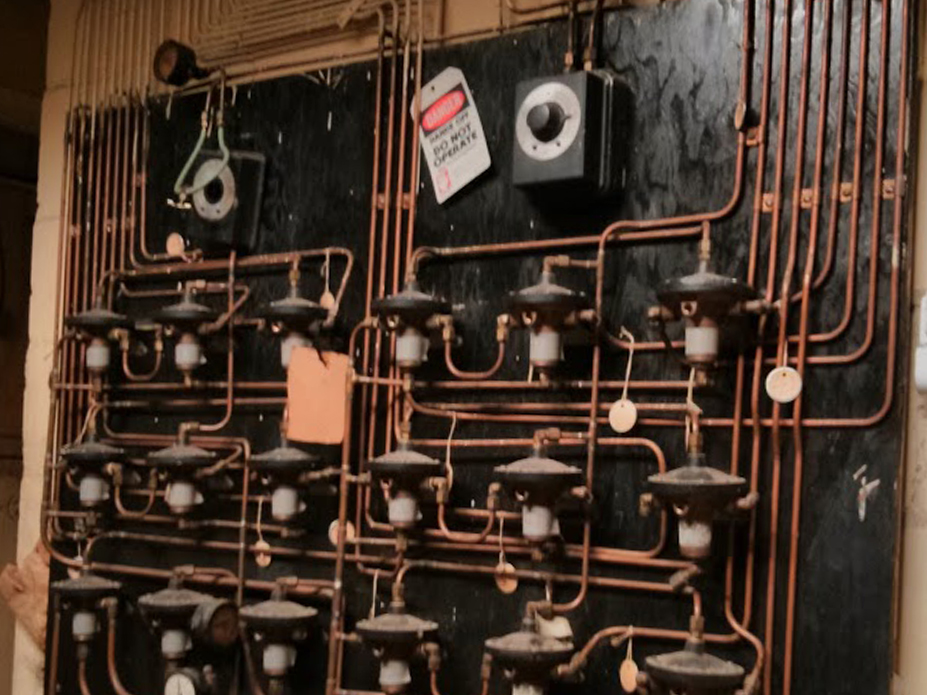As conditions within the library infrastructure and systems continue to deteriorate, the libraries administration has put together a renovation plan to be executed in 2020 to address these issues.
“We constantly have students talking about the fact that the power outlets don’t work, there aren’t enough of them, the lights are bad and you can’t see, the restrooms are awful and all of the things that all of us think are pretty terrible for a building that’s used as much as this one,” said Catherine Murray-Rust, Vice President of Learning Excellence and Dean of Libraries. “So we did the 2020 plan to bring some attention to the state of library buildings and say to campus that we understand that the nature of libraries is changing.”
“The ten-year concept plan for the Georgia Tech library reflects the continued transition from a collection-oriented model to a service-oriented model. These notes and schematics suggest ways that Library space can be better utilized to fulfill its mission, provide Central Campus collaboration space, manage collections, update and improve office space for library staff, and provide needed upgrades to building…systems,” said the plan overview.
The plan began by defining the space utilization for the library in 2011 against what the plan for 2020 should be. In terms of available space, study space made up about 29 percent in 2011 and would be increased to 49 percent in 2020, stacks; bookshelves and collections made up about 46 percent and would be reduced to 24 percent and offices made up 14 percent and would increase to 23 percent. With this, the 2020 plan proposes an overall reduction of physical collections throughout the library. Since a quarter of all print journals are available digitally and 85 percent of the collection has not been circulated for ten years, this is an area of priority.
“We’re willing to make some very radical changes in the way the space is used in the two existing library buildings, Crossland and Price Gilbert, in return for the campus renovating these spaces and using them for different purposes. We want them to still be libraries in the broadest sense of the term, places where there are library services, but we don’t want them to be places where we store a lot of paper that nobody uses anymore,” Rust said.
With these proposals though, there are no true concrete plans as to how this assignable space would be renovated or reorganized, but only discussions and broad outlines currently, according to Dean Murray-Rust.
In addition, there would also be a complete overhaul of some of the electrical and mechanical systems that many people don’t see on a day to day basis. According to Katherine Norris, the Project Coordinator for Library Facilities, many of these such as the heating, ventilation and air conditioning (HVAC) unit are the same ones that have been in the library since it was built in 1953. These systems were not built for the amount of traffic and use that they are receiving today on a daily basis.
Maintenance costs on these systems have also steadily increased from $421,000 in 2009 to $632,000 in 2011. These will only continue to rise as the problems are being fixed with band-aid solutions, with some parts literally being held together by duct tape. Norris explained a complete overhaul of these systems must be planned in a strategic manner as to not detriment student life.
“It’s incredible that the facilities staff is able to keep the library in working condition with the equipment they have. The most noteworthy thing for me was the fact that there is no real working thermostat for the library, so the staff has to actually guess and check the temperature by manually adjusting it little by little if they want to make any changes,” said third-year AE major Nicholas Picon, who took a behind-the-scenes infrastructure tour of the library.
“I was shocked at what I saw. The electrical equipment is still the original equipment that the library was built with in the 1950s. This means that the reason the library doesn’t have any more outlets is because the building can’t handle any more,” said second-year BMED major Marnie Williams. “The library is one of the most widely used buildings on campus and there is so much potential for it to be even more used. There is an awesome vision to transform the upstairs area into cool new study spaces that would be even more heavily used by the student body, but there is also a huge need for money in order to make it happen.”
“I really believe that the renovations of the library should be a much bigger priority for the school and community than the currently are. It really bothers me that the renovations of other, newer buildings are higher on the list when the library is such an essential resource for students. It is a central point of campus and houses a lot of the services that students rely on to succeed in academics,” said second-year CHBE major Veena Krishnan.
